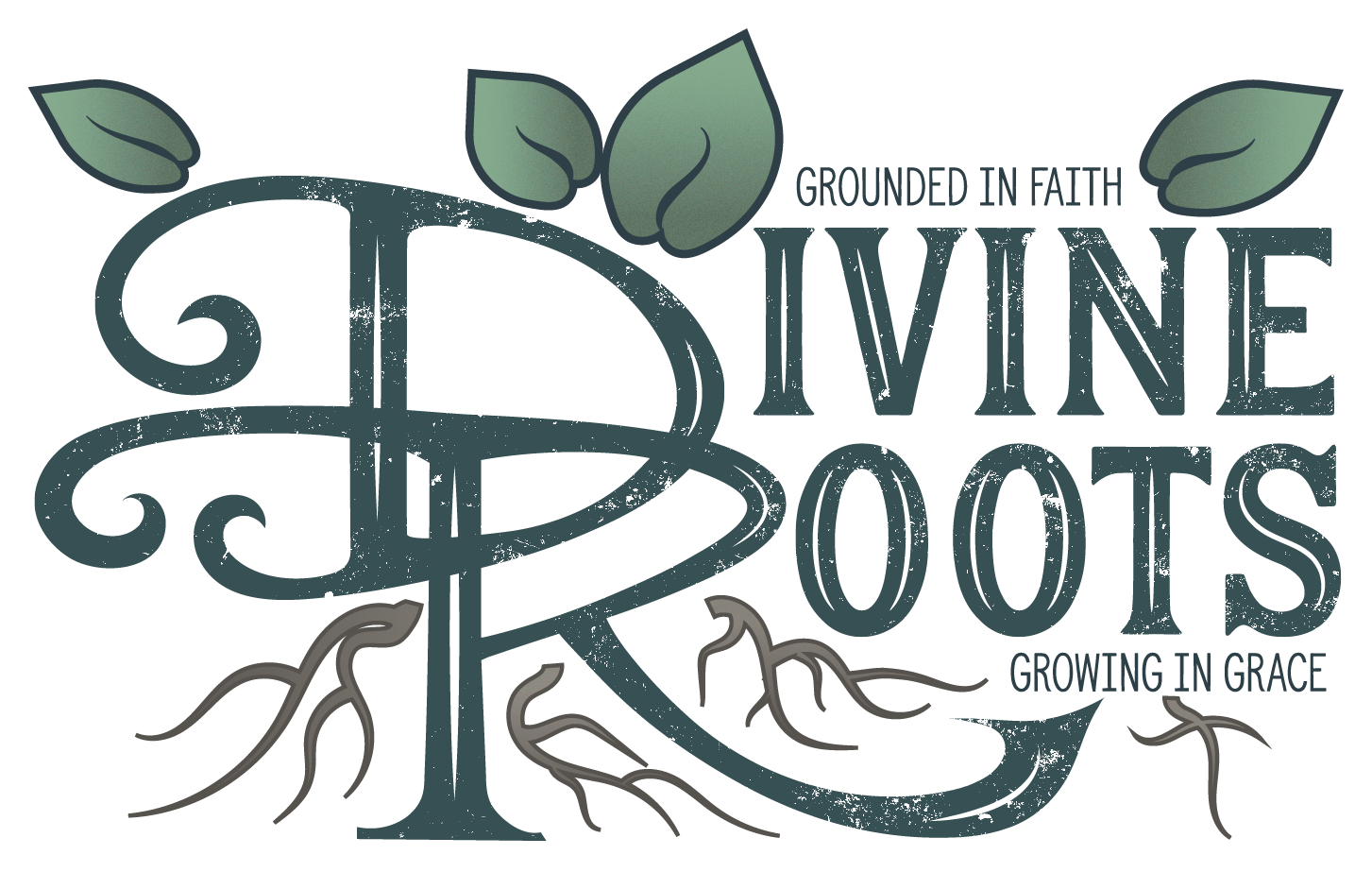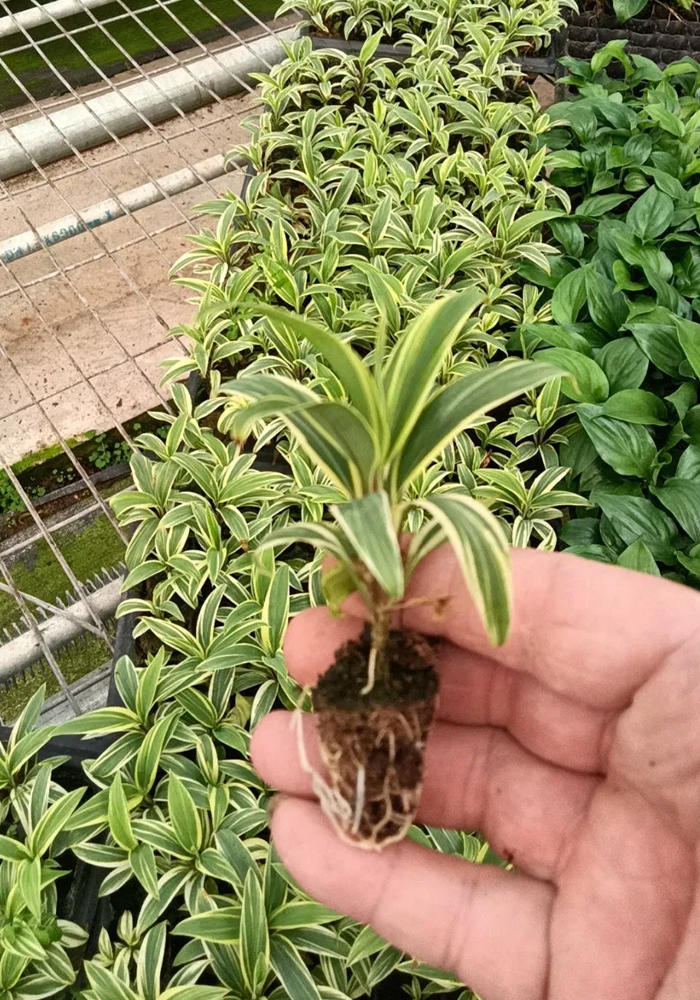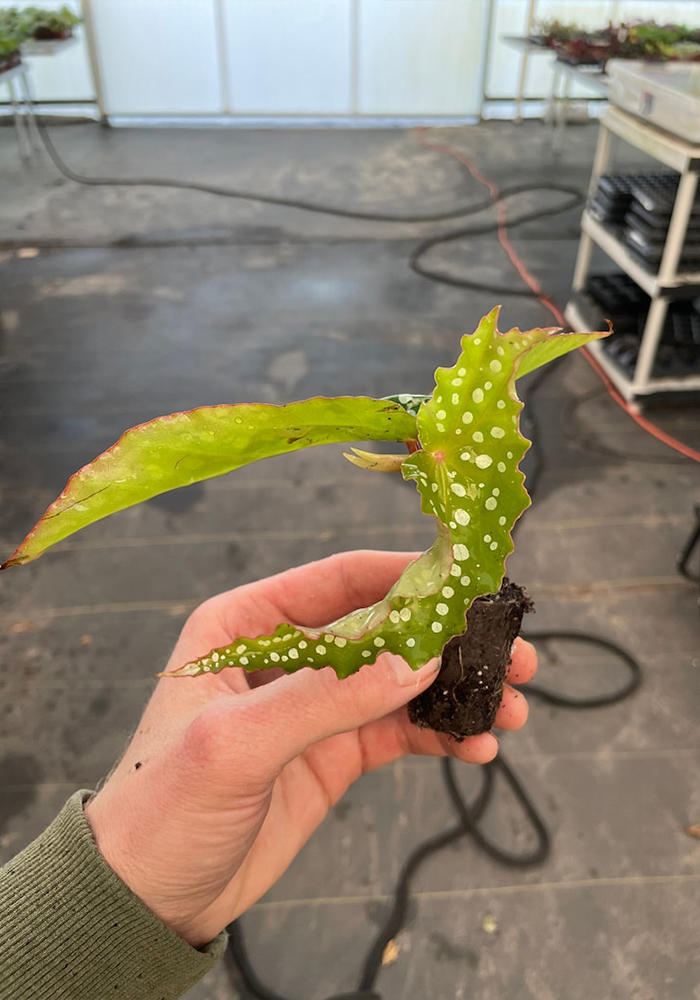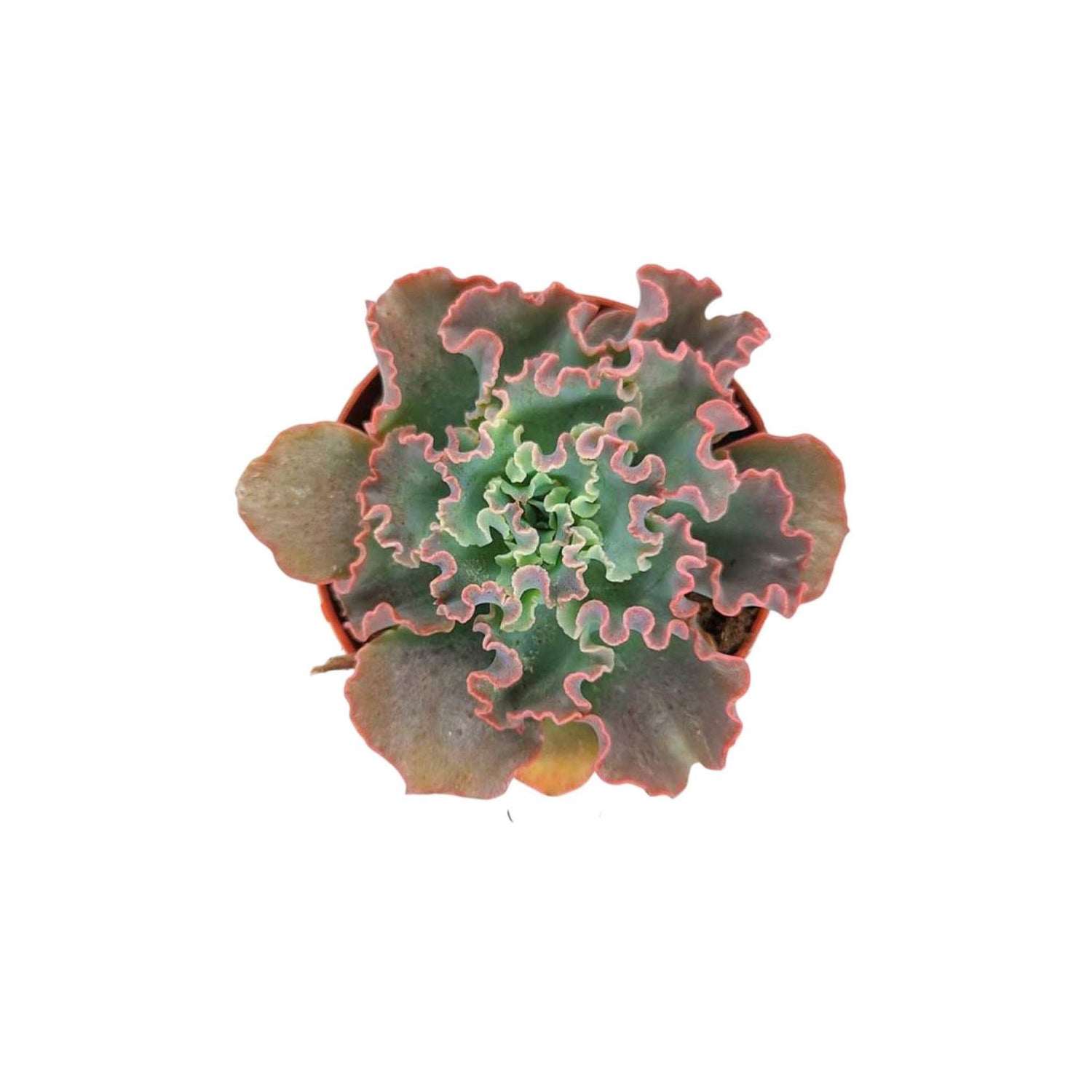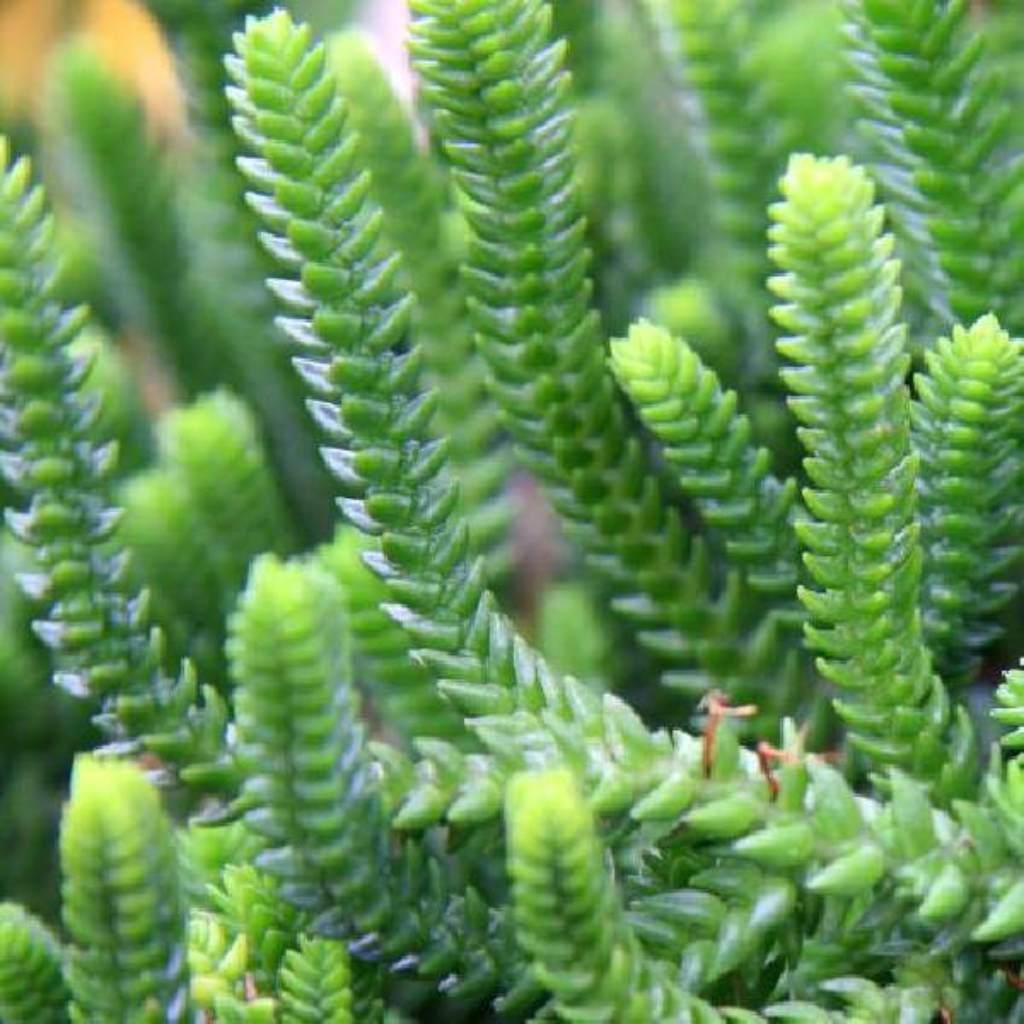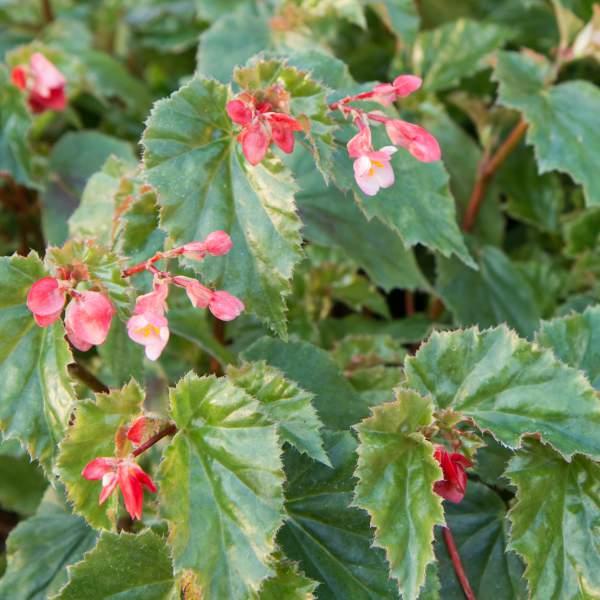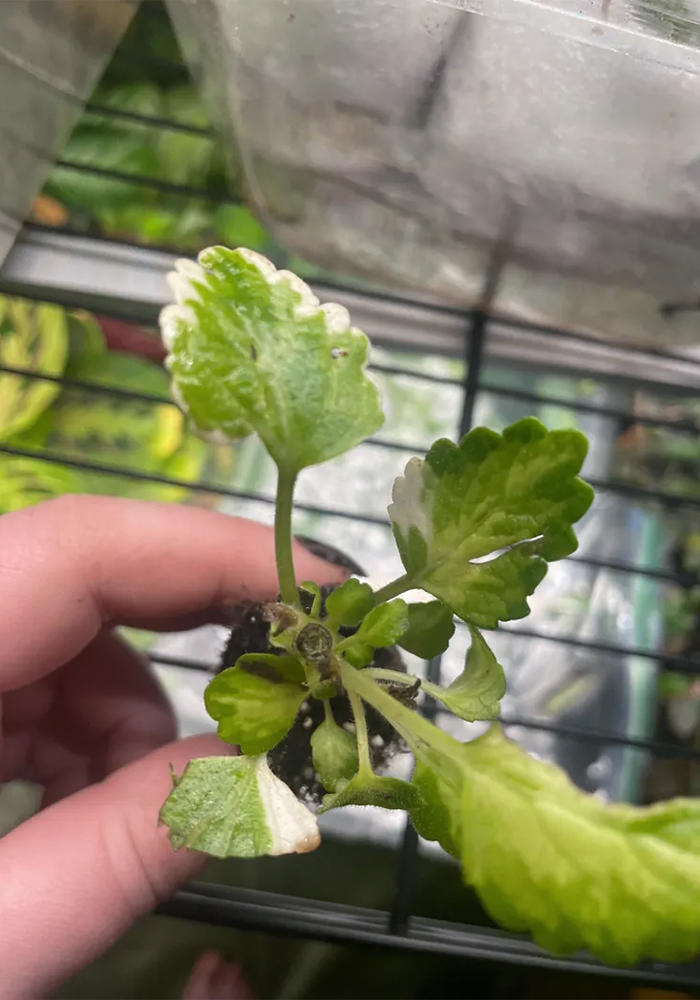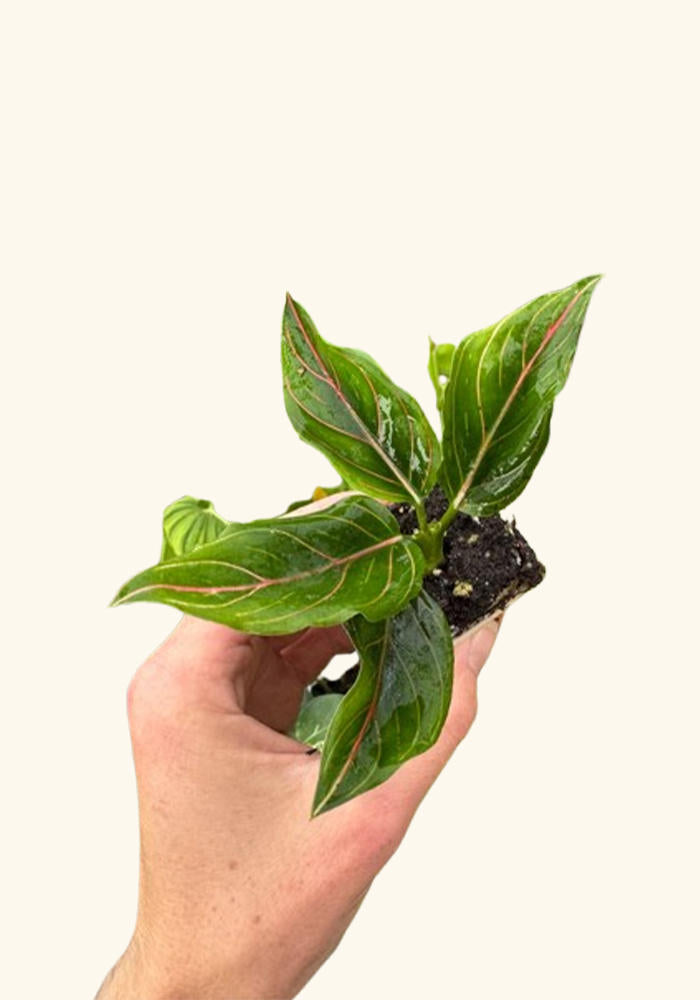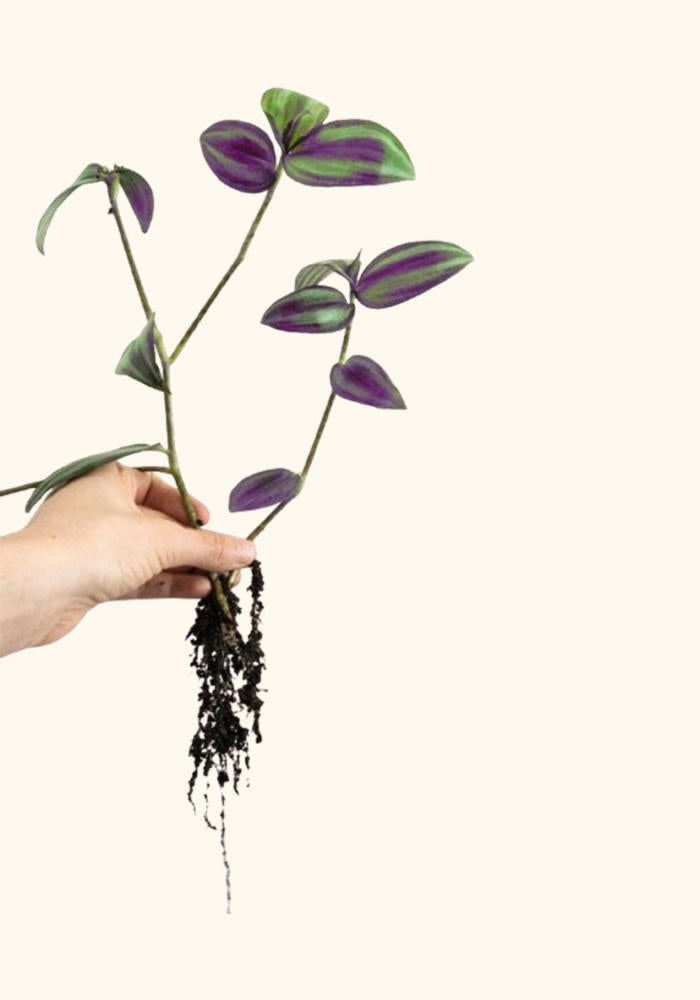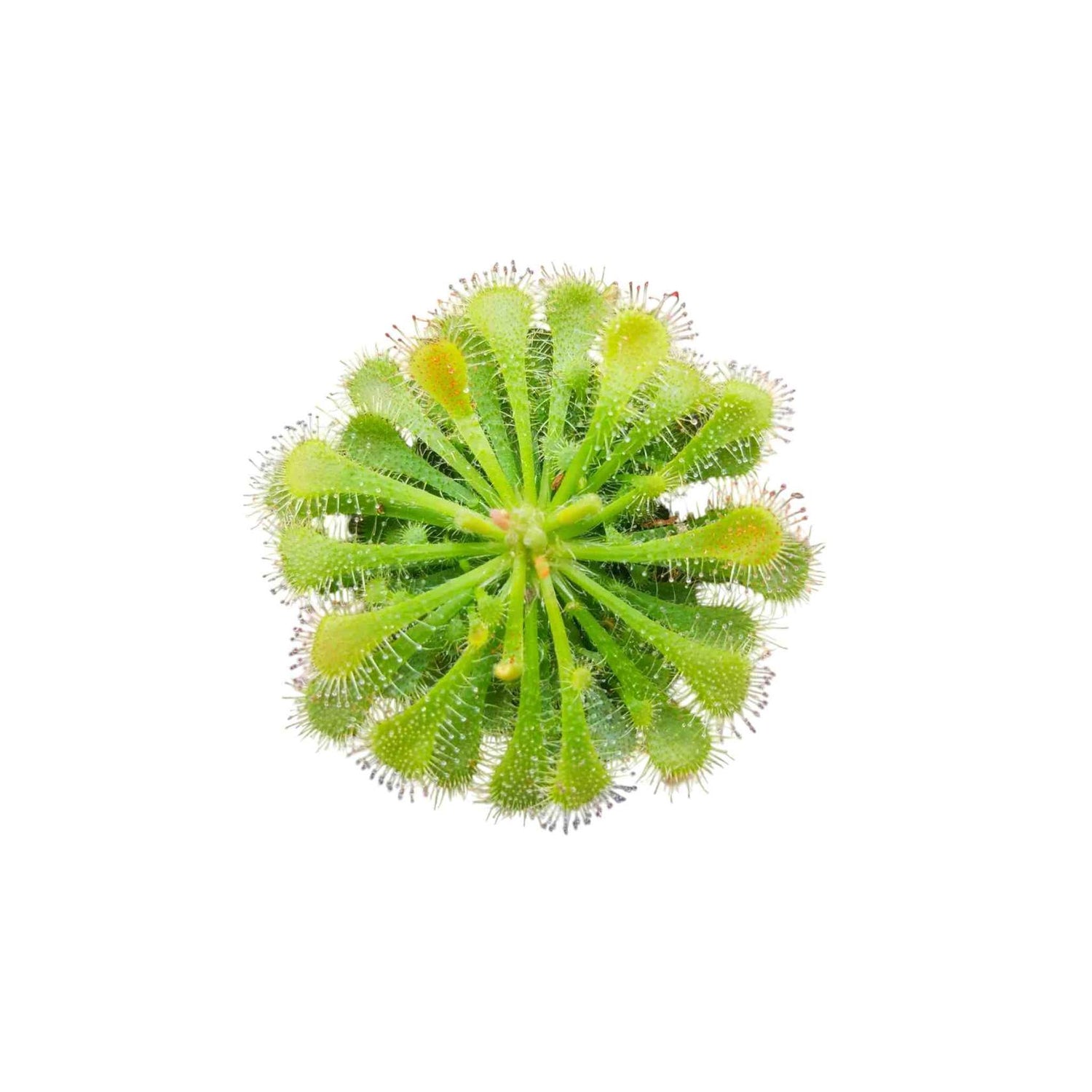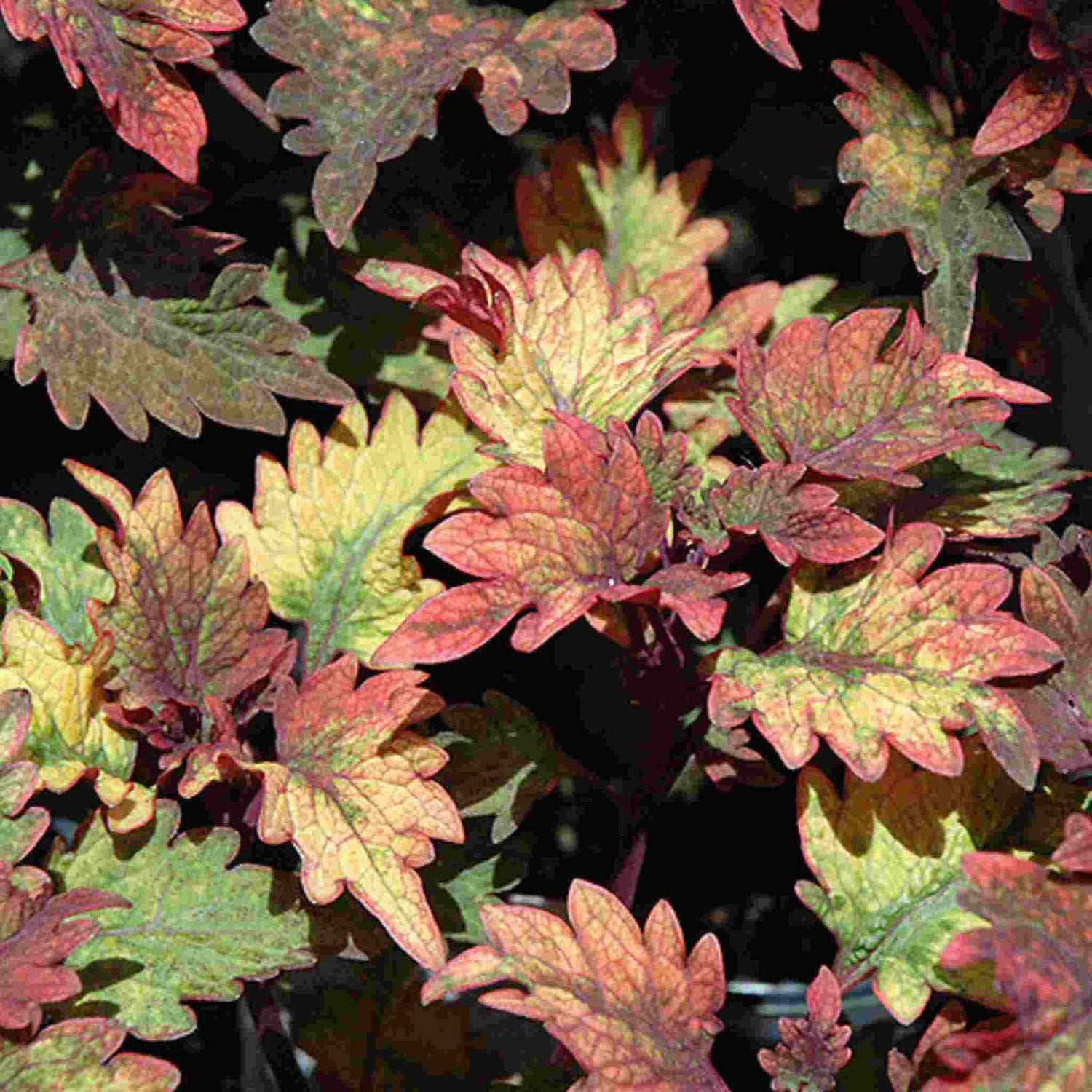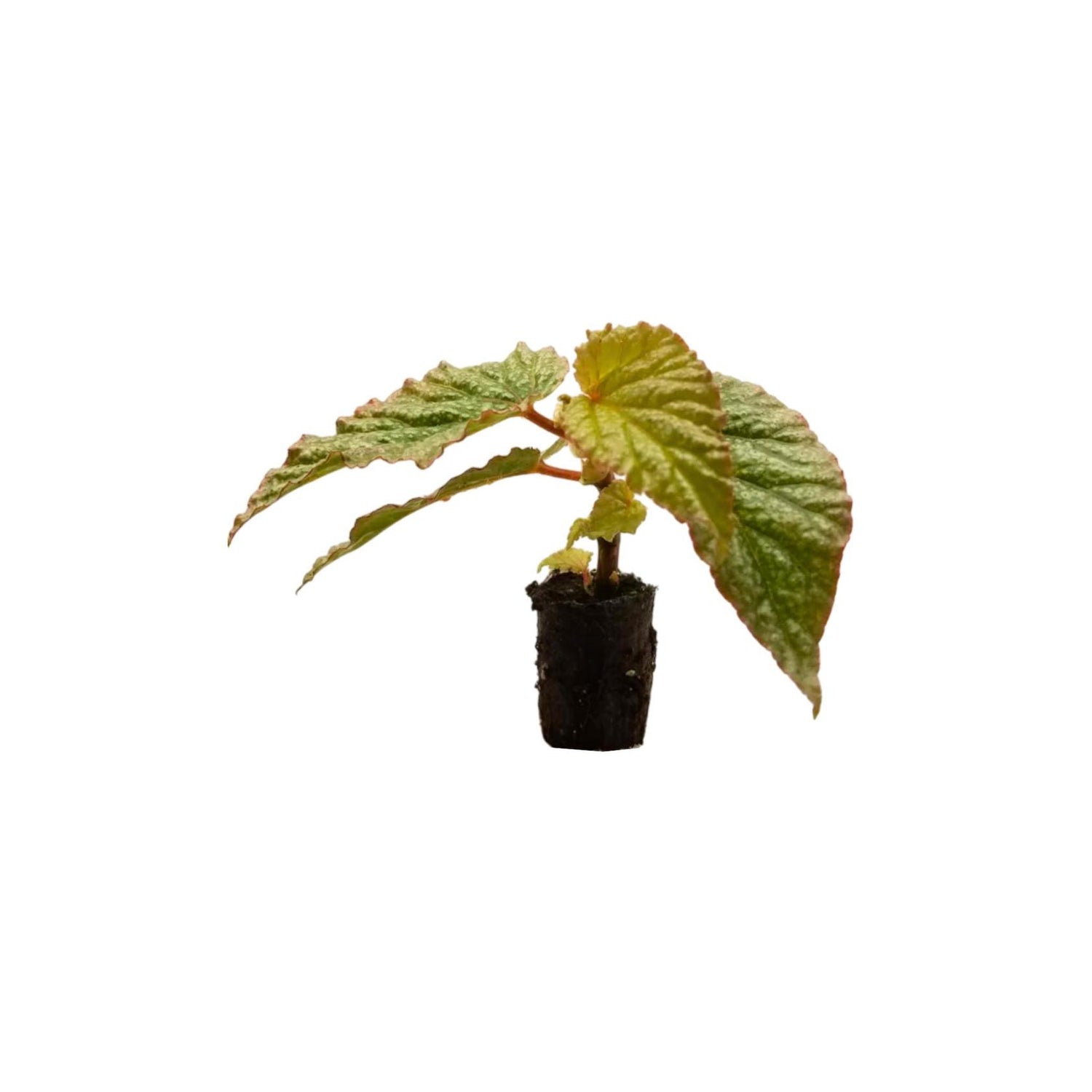Sort by:
71 products
71 products
The Cordyline Coffee Compacta (Cordyline fruticosa ‘Coffee Compacta’) is an elegant, low-maintenance tropical plant that adds a burst of color and texture to any indoor space. With its deep, coffee-colored leaves and compact, bushy growth habit, this variety of Cordyline stands out as a unique and attractive addition to your home or office. Native to tropical regions of Asia and Australia, Cordyline Coffee Compacta thrives in a range of indoor environments, making it perfect for plant lovers seeking to brighten their space with minimal effort.
This stunning ornamental plant features striking, glossy leaves that emerge in rich hues of deep green and coffee-brown, creating a bold contrast and adding interest to your plant collection. Reaching a moderate height of 2 to 3 feet as an indoor plant, this Cordyline cultivar is a great choice for both beginner and seasoned gardeners.
Cordyline Coffee Compacta: Benefits
- Air-purifying: Helps remove toxins from the air, contributing to a healthier home environment.
- Pet-friendly: Safe for homes with pets, as it’s non-toxic.
- Compact and space-saving: Ideal for smaller spaces or as a focal point in larger plant arrangements.
- Low-maintenance: Perfect for busy individuals or those new to plant care.
Cordyline Coffee Compacta: Alternative Names
- Ti Plant
- Dracaena
- Hawaiian Ti Plant
Cordyline Coffee Compacta Care Guide
To ensure your Cordyline Coffee Compacta thrives, here are some easy-care tips:
Watering
Cordyline prefers slightly moist soil, but be cautious not to overwater, as this can lead to root rot. Water thoroughly when the top inch of soil feels dry to the touch. Ensure that your plant’s pot has good drainage to prevent standing water.
Light and Temperature
Cordyline Coffee Compacta flourishes in bright, indirect light, though it can tolerate some direct sunlight for short periods. It grows best at room temperatures between 65°F to 75°F (18°C to 24°C). Keep your plant away from cold drafts or temperatures below 50°F (10°C), as it prefers warmth.
Humidity
This plant enjoys higher humidity levels, so it’s a great choice for bathrooms or kitchens. If your home is dry, consider misting the leaves regularly or placing a humidifier nearby to keep the air around your Cordyline moist. Grouping plants can also help boost humidity.
Soil, Repotting, and Fertilizing
Cordyline Coffee Compacta prefers well-draining soil, such as a standard houseplant mix with added perlite for aeration. When it’s time to repot, choose a container that’s just one size larger than the current pot. Repotting every couple of years is usually enough. During the growing season (spring and summer), feed your plant with a balanced, diluted liquid fertilizer once a month to encourage healthy growth.
Propagation
Cordyline plants are easy to propagate from stem cuttings. Simply take a healthy cutting, place it in water until roots develop, and then transplant it into well-draining soil.
Pruning, Cleaning, and Common Issues
Prune your Cordyline regularly to keep its shape compact and tidy. Remove any damaged or brown leaves to encourage new growth. Common problems include browning leaf tips, often due to inconsistent watering or low humidity, and yellowing leaves, which can result from overwatering or poor drainage.
Cordyline Coffee Compacta: Placement, Companion & Alternative Plants
Whether you’re creating a tropical indoor oasis or adding some greenery to your desk, the Cordyline Coffee Compacta is an ideal choice for various home and office settings.
Best Locations & Uses
- Great for smaller apartments or homes with limited space
- A beautiful accent plant in living rooms, offices, or bedrooms
- Adds a unique touch to tropical plant collections
- The perfect housewarming or gift plant
Companion Plants
To create a lush indoor jungle, pair your Cordyline with other easy-care tropical plants such as:
- Spider Plant (Chlorophytum comosum): Known for its air-purifying abilities and trailing green leaves.
- Peace Lily (Spathiphyllum): An elegant plant that thrives in low light and provides lush, white blooms.
- Pothos (Epipremnum aureum): A hardy and low-maintenance vine that’s perfect for hanging baskets or shelves.
Alternative Plants
If you’re looking for a different tropical beauty, consider these alternatives:
- Dracaena Fragrans (Corn Plant): Known for its tall, upright leaves and easy care requirements.
- Philodendron Brasil: A gorgeous trailing plant with colorful heart-shaped leaves.
- Bromeliad (Bromeliaceae): A vibrant, flowering plant that adds a pop of color to any space.
Add a Cordyline Coffee Compacta to Your Collection!
With its bold appearance and easy care, the Cordyline Coffee Compacta is the perfect plant to bring elegance and vitality to your indoor space. Order yours today and enjoy the beauty of this unique tropical plant in your home!
The Angel Wing Begonia 'My Special Angel' is a striking plant known for its elegant, wing-shaped leaves adorned with delicate silvery spots. This rooted starter plant boasts lush green foliage that shimmers under indirect light, making it a standout addition to any indoor garden. A member of the Begoniaceae family, this variety originates from tropical and subtropical regions, thriving in environments with warmth and humidity. Its charming blooms appear seasonally, producing clusters of delicate pink flowers that enhance its appeal.
Compact yet eye-catching, the 'My Special Angel' Begonia grows beautifully in pots, making it ideal for smaller spaces or tabletop displays. Easy to care for, this plant flourishes with just a little attention, rewarding you with stunning foliage and occasional flowers. Its graceful appearance and minimal maintenance needs make it a perfect choice for beginners and seasoned plant enthusiasts alike.
Angel Wing Begonia: Benefits
- Unique ornamental foliage: Its distinctive leaf pattern makes it a natural conversation starter.
- Seasonal blooms: Soft pink flowers provide an added touch of beauty.
- Low-maintenance plant: Ideal for those with busy schedules.
- Compact size: Perfect for desks, shelves, and small spaces.
- Air purifier: Helps improve indoor air quality.
Angel Wing Begonia: Alternative Names
- Cane Begonia
- Spotted Begonia
- Polka Dot Begonia
Angel Wing Begonia Care Guide
Watering
The 'My Special Angel' prefers evenly moist soil but does not tolerate overwatering. Allow the top inch of soil to dry out between waterings to prevent root rot. Use water with filtered or room-temperature water for best results.
Light and Temperature
This Begonia thrives in bright, indirect light. Avoid placing it in direct sunlight, as this can scorch its delicate leaves. Keep the temperature between 60°F and 75°F to maintain its optimal health.
Humidity
Like many tropical plants, this Begonia enjoys higher humidity levels. Mist the plant occasionally or use a pebble tray to maintain a comfortable environment. Grouping it with other plants can also help create a microclimate.
Soil and Fertilizing
Use a well-draining potting mix, preferably one designed for houseplants. Feed your Begonia every two weeks during the growing season (spring and summer) with a balanced liquid fertilizer diluted to half strength.
Pruning and Repotting
Prune off any yellowing or dead leaves to encourage healthy growth. Repot every 1-2 years in early spring, using a slightly larger pot with proper drainage holes.
Angel Wing Begonia: Placement, Companion & Alternative Plants
Best Locations & Uses
- Ideal for desktops, side tables, and hanging planters.
- A beautiful gift for plant lovers.
- Perfect for bright indoor spaces like living rooms or offices.
Companion Plants
Pair your Angel Wing Begonia with these complementary plants to create a lush indoor garden:
- Philodendron Brasil: A trailing plant with variegated leaves that complements the Begonia's upright growth habit.
- Peace Lily: Adds elegant white blooms and thrives in similar lighting conditions.
- Calathea Orbifolia: A striking foliage plant with large, striped leaves to enhance your plant collection.
Alternative Plants
If you're exploring other options, consider these beautiful houseplants:
- Begonia Maculata (Polka Dot Begonia): Similar in care but with bold white spots and a more dramatic look.
- Fuchsia Plant: Known for its colorful, drooping flowers.
- Chinese Evergreen (Aglaonema): A low-maintenance choice with striking patterned leaves.
Add an Angel Wing Begonia to Your Indoor Collection!
Elevate your space with the elegance and charm of the 'My Special Angel' Begonia. Whether you're a beginner or a seasoned plant enthusiast, this rooted starter plant will bring beauty and vibrancy to your home. Order yours today and start growing a captivating indoor garden!
The Echeveria Shaviana (Echeveria shaviana), also known as Mexican Hens or Pink Frills, is a member of the Crassulaceae family native to the rocky cliffs of Mexico. Renowned for its ruffled, spoon-shaped leaves in soft lavender-gray with delicate pink edges, this succulent exudes a delicate, lace-like elegance. Thriving in bright light and well-draining soil, it’s a low-maintenance perennial perfect for indoor containers, rock gardens, or drought-tolerant landscapes. Hardy in zones 9-11, its compact rosettes and seasonal pink blooms make it a favorite among succulent collectors.
Symbolizing grace and tranquility, Echeveria Shaviana is non-toxic to pets and humans, ensuring safe placement in any home.
Echeveria Shaviana: Benefits
- Adds soft, sculptural beauty with its crinkled, pastel-hued foliage
- Thrives in dry conditions and is ideal for xeriscaping or water-wise gardens
- Purifies indoor air by absorbing pollutants like benzene and formaldehyde
- Compact size (6-8 inches tall) fits windowsills, desks, or fairy gardens
- Low-maintenance and drought-tolerant, and perfect for busy plant lovers
- Produces pink, bell-shaped flowers on tall stalks in summer for seasonal charm
- Safe for homes with pets or children
Echeveria Shaviana Care Guide
This hardy succulent is easy to grow but requires specific care to maintain its ruffled texture and subtle coloration. Follow these guidelines for thriving plants.
Watering
- Water only when the soil is completely dry and every 2-3 weeks in summer, sparingly in winter.
- Use the soak-and-dry method: water deeply at the base, avoiding the leaves to prevent rot.
- Ensure pots have drainage holes to avoid waterlogging.
Light
- Requires 6-8 hours of bright, indirect sunlight daily to enhance pink edges.
- Indoors, place near south or west-facing windows; use sheer curtains to filter intense sun.
- Too little light causes stretching (etiolation) and loss of ruffled texture.
Temperature
- Prefers 60-80℉ (16-27℃) protect from frost and temperatures below 40℉ (4℃).
- Low humidity is ideal to avoid damp environments to prevent fungal issues.
Common Problems
- Root rot: Caused by overwatering, use gritty, well-draining soil.
- Mealybugs: Treat with neem oil or 70% isopropyl alcohol.
- Faded color: Increase light exposure to restore pink edges.
- Leaf curling: Often due to underwatering or low humidity.
Best Locations & Uses
- Sunlit windowsills, offices, or bright patios with filtered light
- Outdoor rock gardens, succulent beds, or xeriscapes
- Textural accent in terrariums or cottage-themed arrangements
- Wedding décor, table centerpieces, or calming office accents
- Pairs with sedum, graptoveria, or blue echeverias for contrast
- Ideal for small spaces, balconies, or pet-friendly homes
The Sedum Acre Rooted Starter Plant is a young, pre-rooted specimen of the hardy succulent Sedum acre, commonly known as& Goldmoss Stonecrop or Biting Stonecrop. Native to Europe and naturalized in temperate regions, this Crassulaceae family member forms dense mats of tiny, fleshy, bright green leaves that turn golden-yellow in full sun. The rooted starter is acclimated for easy transplanting, ensuring rapid establishment and vigorous growth. Mature plants reach 2-4 inches tall and spread indefinitely, making them ideal for ground cover, rock gardens, or erosion control.
Sedum Acre Rooted Starter: Benefits
- Quick establishment: Pre-rooted for faster growth and reduced transplant shock.
- Drought-tolerant: Thrives in dry, poor soils with minimal watering.
- Ground cover: Forms a lush, evergreen carpet that suppresses weeds.
- Pollinator-friendly: Produces yellow star-shaped flowers that attract bees and butterflies.
- Low maintenance: Requires no pruning or fertilizing once established.
Sedum Acre Rooted Starter Care Guide
Light and Water
- Light: Full sun (6+ hours daily) for vibrant foliage and flowering. Tolerates partial shade but may become leggy.
- Water: Water sparingly only during prolonged droughts. Overwatering causes root rot.
Soil and Fertilizing
- Soil: Well-draining, sandy, or gravelly soil. Avoid rich, clay-heavy mixes.
- Fertilizer: None needed. Excess nutrients weaken growth.
Temperature and Humidity
- Temperature: Hardy in USDA zones 3-9. Tolerates frost, snow, and temperatures as low as -30°F (-34°C).
- Humidity: Adapts to dry or moderately humid climates.
Pruning, Propagating, and Repotting
- Pruning: Trim invasive runners if needed. Remove spent flowers to prevent self-seeding.
- Propagating: Divide clumps in spring/fall or scatter stem cuttings on soil—roots easily.
- Repotting: Rarely needed. Refresh container soil every 3-4 years if grown in pots.
Common Problems
- Root rot: Caused by overwatering. Ensure pots or garden beds have excellent drainage.
- Aphids: Treat with insecticidal soap or neem oil.
- Invasive spread: Contain with edging or plant in controlled areas.
- Leggy growth: Due to insufficient light. Move to a sunnier location.
Sedum Acre Rooted Starter: Best Locations & Uses
- Rock gardens: Adds vibrant color and texture among stones.
- Slopes and banks: Stabilizes soil with mat-forming roots.
- Pathways/pavers: Tolerates foot traffic and fills gaps between stones.
- Green roofs: Thrives in shallow, gritty substrates.
- Containers: Ideal for drought-tolerant patio displays.
Note:
Mildly toxic if ingested. Keep away from pets and children.
The Angel Wing Begonia Richmondensis Pink Rooted Starter Plant is a young, established specimen of this tropical cane begonia, ready to grow into a lush, flowering beauty. Known for its glossy, wing-shaped leaves with red undersides and clusters of delicate pink blooms, this Begoniaceae family member originates from South America’s humid forests. The rooted starter features healthy stems and leaves, already acclimated to thrive indoors, and will mature to 18-24 inches tall under proper care.
This starter plant offers a head start for growers, reducing the challenges of propagating from cuttings or seeds. Its established roots ensure faster growth and a higher survival rate compared to unrooted specimens.
Angel Wing Begonia Richmondensis Pink: Benefits
- Ready to grow: Pre-rooted for quick establishment and reduced transplant shock.
- Floral potential: Matures to produce cascading pink flowers alongside striking foliage.
- Air-purifying: Filters indoor pollutants like benzene and formaldehyde.
- Compact size: Ideal for small spaces, shelves, or hanging baskets.
- Beginner-friendly: Easier to care for than unrooted cuttings or seeds.
Angel Wing Begonia Richmondensis Pink Care Guide
Light and Water
- Light: Bright, indirect light (east or west-facing windows). Avoid direct sun to prevent leaf scorch.
- Water: Keep soil lightly moist. Water when the top 1 inch of soil dries. Reduce watering in winter.
Soil and Fertilizing
- Soil: Use a well-draining, peat-based mix with perlite or orchid bark.
- Fertilizer: Begin feeding 4-6 weeks after potting with a balanced liquid fertilizer (10-10-10) monthly during spring-fall.
Temperature and Humidity
- Temperature: 65-75°F (18-24°C). Avoid drafts and temperatures below 55°F (13°C).
- Humidity: Maintain 50-60% humidity. Use a pebble tray or humidifier; avoid misting foliage.
Pruning, Propagating, and Repotting
- Pruning: Trim leggy stems once established to encourage bushiness.
- Propagating: After maturity, take 4-6 inch stem cuttings with nodes and root in water or soil.
- Repotting: Repot into a 1-2 inch larger pot when roots outgrow the starter container (typically in 6-12 months).
Common Problems
- Root rot: Overwatering in early stages. Ensure the starter pot has drainage holes.
- Leaf drop: Sudden changes in temperature or humidity. Acclimate gradually to new environments.
- Mealybugs/spider mites: Inspect regularly; treat with neem oil or insecticidal soap.
- Slow growth: Adjust light exposure or humidity if conditions are suboptimal.
Angel Wing Begonia Richmondensis Pink: Best Locations & Uses
- Bright tabletops: Showcases foliage and future blooms as a desk or shelf centerpiece.
- Humid bathrooms: Thrives in ambient moisture and indirect light.
- Hanging baskets: Trails gracefully once mature, perfect for patios or sunrooms.
- Gift plant: An excellent choice for gifting to plant enthusiasts.
- Pet-free zones: Toxic to cats and dogs if ingested.
The Plectranthus Swedish Ivy Mint (Plectranthus amboinicus) is an attractive, aromatic plant with cascading green leaves that boast a hint of minty fragrance when touched. Often referred to as the "Swedish Ivy," this plant is a member of the mint family (Lamiaceae), and it has a unique ability to thrive in a variety of indoor environments. Native to tropical regions of Africa and Asia, Plectranthus Swedish Ivy Mint features trailing, lush growth that adds a soft, natural touch to any room or garden. The plant can grow quickly, with long, drooping stems that make it ideal for hanging baskets, shelves, or as a ground cover in your indoor space.
This easy-going plant loves to be in bright, indirect light but can tolerate a bit of shade as well. Perfect for beginners and those looking to add a touch of greenery without demanding upkeep, the Swedish Ivy Mint is an excellent choice for any plant lover. Plus, it’s a pet-friendly option, making it ideal for households with furry friends.
Plectranthus Swedish Ivy Mint: Benefits
- Air-purifying and refreshing for your indoor space
- Non-toxic to pets and a great addition to homes with animals
- Aromatic and mint-scented leaves when gently brushed
- Low-maintenance and easy to care for
- A beautiful trailing plant that adds vibrant greenery to any space
Plectranthus Swedish Ivy Mint: Alternative Names
- Swedish Ivy
- Indian Mint
- Cuban Oregano
- Country Borage
Plectranthus Swedish Ivy Mint Care Guide
While this plant is known for being a low-maintenance option, understanding the essentials of care will help it thrive in your home.
Watering
Plectranthus Swedish Ivy Mint prefers consistent moisture, but make sure not to overwater. Allow the top inch of the soil to dry out before watering again. Be sure the pot has proper drainage to avoid waterlogging, which could lead to root rot.
Light and Temperature
The Swedish Ivy Mint does best in bright, indirect light but can tolerate some light shade. It prefers a moderate room temperature between 65°F to 75°F. Avoid placing it in direct sunlight, as this can scorch the leaves. A spot near a window with filtered light is ideal.
Humidity
While it appreciates humidity, Swedish Ivy Mint is quite adaptable and will do fine in normal indoor conditions. However, if your home is very dry, you can increase the moisture by misting the plant or placing it on a humidity tray.
Soil, Repotting, and Fertilizing
Plant your Swedish Ivy Mint in well-draining, lightweight potting soil. Repot it when necessary, typically every 1-2 years, or when it outgrows its container. A general-purpose potting mix with added perlite will work well. During the growing season (spring and summer), feed your plant monthly with a balanced liquid fertilizer at half-strength.
Propagation
You can easily propagate your Plectranthus Swedish Ivy Mint by taking stem cuttings from a healthy plant. Place the cuttings in a jar of water or directly in moist soil, and roots should begin to form in about 1-2 weeks. Once rooted, transplant them into their pots.
Pruning, Cleaning, and Common Issues
Prune your plant regularly to maintain its compact shape and encourage fuller growth. Trim back leggy or overgrown stems as needed. Regularly clean the leaves with a damp cloth to remove dust and maintain the plant’s healthy appearance. The Swedish Ivy Mint is relatively pest-resistant but may occasionally attract aphids or mealybugs. Regularly check for pests and treat with insecticidal soap as needed.
Plectranthus Swedish Ivy Mint: Placement, Companion & Alternative Plants
Whether you place it in a hanging basket, as a shelf accent, or let it cascade over the edge of a container, Plectranthus Swedish Ivy Mint will thrive and enhance the beauty of your indoor garden. Its refreshing aroma and easy care make it a delightful addition to any home.
Best Locations & Uses
- Ideal for homes with pets as it’s non-toxic
- Perfect for beginners or plant enthusiasts looking for a low-maintenance option
- Great as a hanging plant or trailing over shelves, creating a relaxed, natural vibe
- Can be placed in the kitchen for its minty fragrance or near windows for optimal light
- Fantastic gift for plant lovers who appreciate fragrant, hardy indoor plants
Companion Plants
To create a beautiful indoor plant display, consider pairing your Swedish Ivy Mint with other low-maintenance plants that share similar care requirements:
- Spider Plant (Chlorophytum comosum): A resilient and air-purifying plant that also thrives in indirect light and needs similar watering.
- Pothos (Epipremnum aureum): A trailing vine with heart-shaped leaves, the Pothos complements the cascading nature of the Swedish Ivy Mint.
- Philodendron: A versatile, easy-to-care-for plant that pairs well with the Swedish Ivy Mint's lush green growth.
Alternative Plants
If you’re looking for plants with similar benefits, consider these options:
- English Ivy (Hedera helix): A well-known trailing plant that thrives in similar conditions and is great for air purification.
- Mint (Mentha): For those who love the fragrance of mint, this plant offers aromatic leaves perfect for culinary use as well as a fresh indoor aroma.
- Creeping Jenny (Lysimachia nummularia): A trailing groundcover that thrives in bright, indirect light and is an excellent addition to your indoor garden.
Add a Plectranthus Swedish Ivy Mint to Your Indoor Garden!
Freshen up your living space and enjoy the aromatic beauty of the Plectranthus Swedish Ivy Mint. This charming, low-maintenance plant will bring joy and vitality to any corner of your home!
The Aglaonema Red Vein (Aglaonema spp.) is a striking tropical plant known for its vibrant, dark green leaves accented with rich red veins, making it a standout addition to any plant collection. This beautiful plant originates from Southeast Asia, where it thrives in shaded forests. With its elegant appearance, it’s often referred to as the "Chinese Evergreen," and it is admired for its ability to thrive in indoor conditions with minimal care.
As an indoor plant, the Aglaonema Red Vein can grow up to 2 feet tall, but its manageable size makes it perfect for both compact and spacious areas. This low-maintenance plant is perfect for beginners or anyone looking to add a touch of color to their indoor garden with minimal effort.
Aglaonema Red Vein: Benefits
- Excellent air purifier
- Low-maintenance and easy to care for
- Non-toxic to pets, making it a safe choice for homes with animals
- Beautiful focal point plant with vibrant foliage
- Known to thrive in low-light conditions, making it a perfect addition to any room
Aglaonema Red Vein: Alternative Names
- Chinese Evergreen
- Red Aglaonema
- Aglaonema ‘Red Vein’
Aglaonema Red Vein Care Guide
Although the Aglaonema Red Vein is a resilient plant, providing the right care will ensure it flourishes in your home. Here’s a guide to keep your plant healthy and vibrant:
Watering
The Aglaonema Red Vein prefers consistently moist soil, but it’s important not to let it become soggy. Water your plant when the top 1-2 inches of soil feel dry to the touch. Always ensure that the pot has good drainage to avoid water accumulation at the bottom.
Light and Temperature
This plant thrives in bright, indirect light but can tolerate lower light conditions, making it ideal for areas that receive partial sunlight or even artificial light. It prefers a room temperature between 65°F and 75°F. Avoid placing it in areas that are too hot or cold, as extreme temperatures can cause stress to the plant.
Humidity
The Aglaonema Red Vein enjoys moderate humidity. If your home is particularly dry, consider placing the plant on a humidity tray or grouping it with other plants to create a naturally humid environment. A light misting every so often can also help.
Soil, Repotting, and Fertilizing
The Aglaonema Red Vein grows best in well-draining, loamy soil. It doesn’t need frequent repotting, but when it outgrows its pot (typically every 1-2 years), you can upgrade to a pot that’s 1-2 inches larger. During the growing season, feed it monthly with a balanced liquid fertilizer diluted to half strength to promote healthy growth.
Propagation
Aglaonema Red Vein can be propagated easily through stem cuttings. Cut a healthy stem just below a node, and place the cutting in water to root. Once roots have developed, you can plant the cutting in well-draining soil.
Pruning, Cleaning, and Common Issues
To maintain the plant’s attractive appearance, remove any yellow or damaged leaves. Occasionally wipe the leaves with a damp cloth to keep them dust-free and allow for better photosynthesis. Common issues include yellowing leaves from overwatering or browning tips from underwatering. Keep an eye out for pests like mealybugs or spider mites, which can affect the plant’s health.
Aglaonema Red Vein: Placement, Companion & Alternative Plants
Whether you’re looking to add a pop of color to your office or a cozy corner of your home, the Aglaonema Red Vein is the perfect choice. It’s also an excellent air-purifying plant that can enhance your indoor air quality while adding beauty to any room.
Best Locations & Uses
- Ideal for offices, living rooms, or bedrooms where indirect light is prevalent
- A great choice for pet owners, as it’s non-toxic to animals
- Perfect for beginners or anyone looking for an easy-care, low-maintenance plant
- A wonderful gift plant for plant lovers or anyone who could use a bit of color in their space
Companion Plants
Pair your Aglaonema Red Vein with other plants that have similar care needs to create a harmonious indoor garden:
- Peace Lily (Spathiphyllum): This low-maintenance, air-purifying plant complements the Aglaonema Red Vein with its lush foliage and occasional white blooms.
- ZZ Plant (Zamioculcas zamiifolia): Another hardy, low-light tolerant plant that can add a striking contrast to your plant collection.
- Snake Plant (Sansevieria): A fellow air purifier, the Snake Plant’s upright leaves and architectural form make a bold pairing with the Aglaonema Red Vein.
Alternative Plants
If the Aglaonema Red Vein isn’t quite what you’re looking for, consider these similar plants that will offer beautiful foliage and a similar ease of care:
- Aglaonema Silver Bay: Known for its stunning silver-gray leaves with green edges, this variety is equally low-maintenance.
- Dracaena Marginata: A beautiful and easy-to-care-for indoor plant with striking red-edged leaves.
- Spider Plant (Chlorophytum comosum): A hardy, adaptable plant with trailing foliage and air-purifying benefits.
Add an Aglaonema Red Vein to Your Indoor Garden!
Brighten up your home or office with the stunning, low-maintenance Aglaonema Red Vein—your perfect companion for a vibrant and healthy indoor space.
The Tradescantia Purple (Tradescantia pallida) is a stunning houseplant known for its vibrant purple foliage and trailing growth habit. Native to the southern parts of North America, this beautiful plant has earned a reputation as a fast-growing and resilient indoor plant. With its striking purple leaves and unique, slightly glossy appearance, the Tradescantia Purple brings a touch of bold color and texture to any space. Whether used in a hanging basket, as a groundcover, or cascading over shelves, its beauty is sure to shine.
Tradescantia Purple thrives in various environments, making it an ideal choice for beginner gardeners or busy plant lovers. It can be grown in both indoor and outdoor settings, though it especially flourishes when grown indoors. The plant’s rapid growth and stunning color changes depending on light exposure, transitioning from deep purples to lighter tones as it reaches toward the sun.
Tradescantia Purple: Benefits
- Beautiful trailing plant that adds color to any indoor space
- Perfect for hanging baskets, containers, or shelves
- Easy to care for and low-maintenance
- Effective air purifier, helping to improve indoor air quality
- Fast-growing and hardy, making it an excellent plant for beginners
- Non-toxic to pets, ensuring safety for homes with furry friends
Tradescantia Purple: Alternative Names
- Purple Heart Plant
- Wandering Jew
- Purple Queen
- Tradescantia Pallida
Tradescantia Purple Care Guide
Though the Tradescantia Purple is relatively low-maintenance, knowing the basics of care will ensure it stays vibrant and healthy:
Watering
Keep the soil consistently moist but not soggy. Water your plant when the top 1-2 inches of soil feels dry to the touch. It is important not to overwater, as this can lead to root rot. Ensure the pot has good drainage.
Light and Temperature
Tradescantia Purple prefers bright, indirect light, though it can tolerate some direct sunlight. Direct sunlight will intensify its purple color. This plant thrives in room temperatures ranging from 60°F to 85°F (15°C to 29°C). Avoid placing it in drafty areas or near cold windows, as it doesn’t tolerate temperature extremes.
Humidity
This plant enjoys moderate to high humidity levels, so it will thrive in bathrooms or kitchens with consistent moisture in the air. If your home is particularly dry, consider placing your Tradescantia Purple near a humidifier, or occasionally mist it to increase the humidity.
Soil, Repotting, and Fertilizing
Plant your Tradescantia Purple in well-draining soil, such as a standard indoor potting mix with added perlite. Repot your plant every year or two to refresh the soil and give it more space to grow. Feed your plant with a balanced, liquid fertilizer every 4-6 weeks during the growing season (spring through summer) for optimal growth.
Propagation
Tradescantia Purple is easily propagated through stem cuttings. Simply cut a 4-6 inch segment of the stem, ensuring it has at least one node, and place it in a glass of water or moist soil until roots develop. Once roots are visible, transfer the cutting to a larger pot or spot in your garden.
Pruning, Cleaning, and Common Issues
Regularly prune any long or leggy stems to encourage bushier growth. Occasionally, wipe the leaves with a damp cloth to remove dust and keep them vibrant. Common issues include yellowing leaves due to overwatering or root rot. Pests, such as spider mites and aphids, can occasionally infest, but they are easily managed with natural insecticidal soap.
Tradescantia Purple: Placement, Companion & Alternative Plants
Whether used as a centerpiece or a hanging plant, Tradescantia Purple can thrive in a variety of spaces and pair beautifully with other plants:
Best Locations & Uses
- Perfect for adding color and vibrancy to living rooms, offices, or entryways
- Great for beginners or people with limited gardening time
- A beautiful trailing plant ideal for hanging baskets or high shelves
- A non-toxic choice for pet owners, safe for cats and dogs
Companion Plants
Tradescantia Purple pairs wonderfully with a variety of other low-maintenance plants:
- Pothos (Epipremnum aureum): Known for its trailing vines, the Pothos complements the Tradescantia Purple with its lush green foliage.
- Spider Plant (Chlorophytum comosum): This air-purifying plant adds a contrasting green and white look that works beautifully with Tradescantia Purple.
- String of Pearls (Senecio rowleyanus): Another trailing plant that creates a cascading effect, perfect for hanging pots or decorative shelves.
Alternative Plants
If you’re looking for other low-maintenance and vibrant indoor plants, consider these alternatives:
- Coleus (Plectranthus scutellarioides): Known for its colorful and variegated leaves, Coleus adds a burst of color and grows well in both indoor and outdoor settings.
- Heartleaf Philodendron (Philodendron hederaceum): A trailing plant with glossy green leaves that works well in hanging baskets or containers.
- Burgundy Rubber Plant (Ficus elastica): With its dark purple leaves and upright growth, this plant adds structure and color to any indoor garden.
Add a Tradescantia Purple to Your Indoor Garden!
Bring vibrant color, easy care, and beautiful trailing foliage into your home with the stunning Tradescantia Purple Rooted Starter Plant! Perfect for beginner gardeners or anyone looking to add a pop of color, this plant will thrive with minimal effort and reward you with years of beauty. Add it to your indoor garden today!
The Sundew Drosera Spatulata Rooted Starter Plant is a captivating carnivorous species native to Australia, New Zealand, and Southeast Asia. Known for its rosette of spoon-shaped leaves covered in sticky, glandular hairs, this plug-rooted starter plant is an excellent choice for enthusiasts seeking a unique addition to their home or garden. Thriving in bright, indirect light or partial sun, it requires consistently moist soil and distilled water to mimic its natural bog habitat. With proper care, this low-maintenance plant can live for several years, making it ideal for hardiness zones 8-11.
Symbolizing nature’s ingenuity, the Sundew Drosera Spatulata is non-toxic and safe around pets and children. Its insect-trapping abilities and striking appearance make it a conversation starter for terrariums, windowsills, or outdoor gardens.
Sundew Drosera Spatulata Rooted Starter Plant: Benefits
- Natural pest control: Traps and digests small insects like gnats and fruit flies
- Adds a unique, exotic aesthetic to indoor or outdoor spaces
- Thrives in humid environments, making it ideal for terrariums or bathrooms
- Educational value for children and plant enthusiasts interested in carnivorous species
- Requires minimal fertilization due to its insect-based nutrient intake
Sundew Drosera Spatulata Care Guide
Watering
Use distilled, rainwater, or reverse-osmosis water to avoid mineral buildup. Keep soil consistently moist by placing the pot in a shallow water tray. Never let the soil dry out completely.
Light
Provide 4-6 hours of bright, indirect sunlight daily. Direct morning sun is acceptable, but avoid harsh afternoon rays. Supplement with grow lights in low-light environments.
Temperature
Maintain temperatures between 65°F-85°F (18°C-29°C). Protect from frost and extreme heat above 95°F (35°C).
Common Problems
- Leaf browning due to tap water minerals or low humidity
- Reduced stickiness on tentacles from insufficient light
- Root rot from overwatering or poor drainage
Best Locations & Uses
- Ideal for humid spaces like bathrooms or kitchen windowsills
- Perfect for carnivorous plant terrariums or fairy gardens
- Excellent educational tool for classrooms or nature-themed decor
- Suitable for outdoor patios in warm, humid climates
- Adds intrigue to office desks or plant collections as a conversation piece
The Coleus Smallwood Driveway Rooted Starter Plant, part of the Lamiaceae family, hails from the tropical regions of Southeast Asia. This plug-rooted starter plant features bold, serrated leaves in a striking marbled pattern of deep burgundy and neon lime-green, designed to brighten shaded driveways, pathways, and garden borders. With a compact, bushy growth habit (10-14" tall), it thrives in partial shade to dappled sunlight, offering year-round color in hardiness zones 10-11 or as a vibrant annual elsewhere. Its sturdy stems and dense foliage make it ideal for high-visibility areas, while requiring minimal upkeep for busy gardeners.
Symbolizing resilience and welcoming charm, the Coleus Smallwood Driveway adds curb appeal to any landscape. Contains diterpene compounds, making it toxic to pets and humans if ingested.
Coleus Smallwood Driveway Rooted Starter Plant: Benefits
- Creates instant impact along driveways, walkways, or entryways with eye-catching foliage
- Tolerates occasional light foot traffic and bouncing debris better than delicate plants
- Thrives in containers, rock gardens, or mixed borders for versatile landscaping
- Fast-growing reaches mature size in 5-7 weeks after transplanting.
- Resists slug damage and deer browsing due to textured leaves.
- Low water needs once established, perfect for eco-friendly xeriscaping.
Coleus Smallwood Driveway Care Guide
Praised for its durability and vivid colors, this starter plant excels in both functional and decorative roles. Follow these guidelines for optimal performance.
Watering
Water deeply when the top 1.5 inches of soil dry out, typically every 4-5 days in summer. Reduce to weekly in cooler seasons. Avoid overhead watering to maintain leaf patterns; use drip irrigation or base watering.
Light
It prefers 3-5 hours of morning sun or filtered afternoon light. It maintains its richest coloration with 40-60% shade. It tolerates full shade but may show reduced marbling. To prevent leaf scorch, avoid harsh midday sun.
Temperature
Ideal range: 55°F-85°F (13°C-29°C). Survives brief dips to 45°F (7°C) but protect from frost. In cooler zones, grow in movable containers for seasonal flexibility.
Common Problems
- Faded leaf patterns from excessive sunlight or poor soil nutrients
- Leggy growth in deep shade, prune regularly to maintain shape
- Root rot in poorly drained clay soils or overwatered containers
- Spider mites in dry, dusty conditions (common near driveways)
- Leaf drop during sudden temperature fluctuations
Best Locations & Uses
- Line gravel driveways or flagstone paths with pops of color
- Anchors shaded container gardens near garages or front porches
- Pairs with silver-leaved plants like dusty miller for contrast
- Thrives in urban courtyards or under tree canopies
- Safe for pet-free homes or elevated planter boxes
The Angel Wing Begonia Frosty Rooted Starter Plant, part of the Begoniaceae family, hails from tropical and subtropical regions of South America. Recognizable by its striking, asymmetrical, angel-wing-shaped leaves adorned with silvery-white "frosted" speckles, this plug-rooted starter plant adds dramatic texture to indoor and shaded outdoor spaces. Thriving in bright, indirect light, it’s a low-maintenance choice for gardeners seeking vibrant foliage with minimal effort. Ideal for hardiness zones 10-11, this begonia can grow for years indoors with proper care.
Symbolizing creativity and harmony, the Angel Wing Begonia Frosty is prized for its decorative appeal. Note that it is toxic to pets and humans if ingested due to calcium oxalate crystals.
Angel Wing Begonia Frosty Rooted Starter Plant: Benefits
- Enhances indoor air quality by filtering pollutants like benzene and formaldehyde
- Adds year-round visual interest with its metallic-speckled foliage and red-tinged stems
- Thrives in humid environments, making it ideal for bathrooms or kitchens
- Compact growth habit perfect for tabletops, shelves, or hanging planters
- Produces clusters of delicate pink or white flowers in optimal conditions
- Non-invasive roots suit small pots and terrariums
Angel Wing Begonia Frosty Rooted Starter Plant Care Guide
This begonia is beloved for its eye-catching leaves and adaptability. Follow these guidelines to nurture your rooted starter plant into a lush, mature specimen.
Watering
Water when the top 1-2 inches of soil feel dry. Use lukewarm, filtered water to avoid leaf spotting. Ensure pots have drainage holes to prevent root rot.
Light
Prefers bright, indirect light (east or north-facing windows). Tolerates medium light but may lose leaf variegation. Avoid direct afternoon sun, which can scorch leaves.
Temperature
Maintain 65°F-75°F (18°C-24°C). Protect from temperatures below 55°F (13°C) and sudden drafts.
Common Problems
- Leaf drop from overwatering or temperature fluctuations
- Powdery mildew in stagnant, humid air
- Leggy growth due to insufficient light
- Mealybugs or spider mites in dry conditions
- Brown leaf edges from low humidity or chemical-sensitive water
Best Locations & Uses
- Perfect for bright bathrooms or kitchens with natural humidity
- Ideal as a desk plant in well-lit home offices
- Adds tropical flair to shaded patios or balconies in warm climates
- Stunning in mixed container gardens with contrasting foliage plants
- Safe for homes without pets or placed on high, inaccessible shelves

